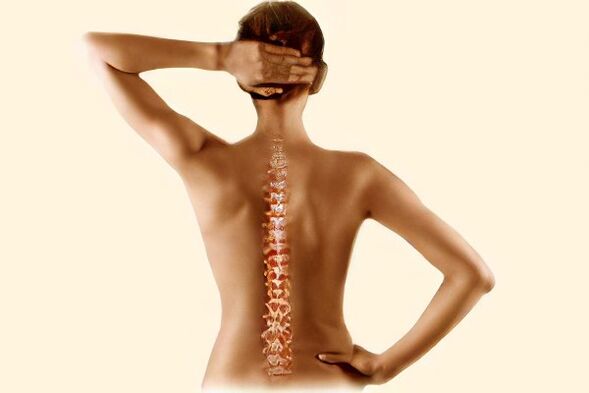
Many often hear, but do not know exactly what osteochondrosis is. In fact, this disease is not so rare. This disease is characterized by dystrophic-degenerative lesions of the vertebral tissues, further deformation of the discs between the vertebrae, as well as the adjacent ligaments of the spinal apparatus.
As a rule, the pathology negatively affects the ligaments first, then the bones and other tissues. Patients go to the doctor already when they start to feel regular pain.
Statistics show that osteochondrosis of the spine has from 50 to 90% of the world's population. Often the symptoms of osteochondrosis appear in people who have passed the threshold of 30 years, but there is a risk of manifestations appearing even in teenagers.
Stages of disease development
In medicine, there are several stages of the course of the disease:
- in phase 1dehydration of the nucleus pulposus is observed, which, in turn, leads to the appearance of deformations in the fibrous ring. The initial stage is characterized by the development of symptoms within the vertebral disc. Signs of osteochondrosis are not pronounced. The treatment of osteochondrosis at this stage can be carried out with the help of exercise therapy and massage;
- in phase 2after a change in the height of the disc and after dehydration of the ligament, the muscles begin to converge. This makes them dependent. Signs of osteochondrosis also include excessive mobility in the vertebral region. This, in turn, can cause the process of displacement of the vertebrae;
- in phase 3the signs of osteochondrosis become more pronounced, as the patient may experience protrusion of the intervertebral discs or even prolapse. Also, due to changes in bones and muscles, the joints begin to suffer, which causes the formation of arthrosis;
- in phase 4the patient's spine is already adapting to the changes that have occurred. The body tries to immobilize the spine as much as possible to maintain its protective as well as musculoskeletal function. At the same time, osteophytes begin to spread to the intervertebral discs - bony growths that form on nearby vertebrae. The resulting osteophytes can cause damage to nerve endings. The result is their noise.
Causes of the disease
Signs of osteochondrosis can appear for such reasons:
- spinal cord injury;
- predisposition to diseases of the musculoskeletal system;
- the natural aging process;
- the presence of constant physical overload;
- obesity;
- wrong posture;
- the presence of constant vibrations - important for some professions, for example, drivers of large trucks;
Symptoms of the disease
Symptoms of osteochondrosis may not appear immediately. The main symptoms include discomfort in the back, as well as pain. Symptoms of osteochondrosis most often appear when the patient exposes the body to a great physical strain. Also a symptom of the disease is the feeling of numbness in the limbs. When at least one of these signs appears, you should pay attention to their nature and intensity - pain in the leg or arm can appear in different ways. Additional signs of osteochondrosis are a disc herniation, as well as lengthening or tightening of the nerve ending.

Osteochondrosis of the spine is of the following types, depending on the location:
- in the cervical region;
- in the region of the sternum;
- in the lumbosacral region.
Treatment of the disease
Treatment of osteochondrosis includes a combination of the following methods:
- therapeutic exercises for osteochondrosis or exercises;
- physiotherapy procedures (acupuncture, pharmacopuncture, electrical stimulation);
- diet for osteochondrosis;
- traction of the spine;
- massage for osteochondrosis.
Treatment of osteochondrosis should be started as soon as possible, but even in the last stages there are great chances to overcome the disease.
Gymnastics for osteochondrosis is one of the most effective methods for preventing and stopping the manifestations of the disease. Exercise therapy for osteochondrosis includes such exercises that can strengthen the muscles of the back and the whole body. It is necessary to perform gymnastics every day to achieve the effect after several sessions. Gymnastics for osteochondrosis includes popular exercises that are probably familiar to many people, as they are used in the morning exercise complex.
Exercise therapy for osteochondrosis not only contributes to a quick recovery, but is also able to prevent the appearance of the first symptoms of the disease. You can do exercise therapy for osteochondrosis instead of morning exercises.
Loading with osteochondrosis should align the uneven column of the spine, strengthen the corset of the back muscles, improve metabolism and blood circulation in the tissues. Proper exercise in osteochondrosis improves blood supply to the brain and helps widen the gap between the vertebrae, which allows you to release previously stuck nerve endings. For a patient, exercises for osteochondrosis may take only a few minutes every day, but even this can lead to a noticeable decrease in the manifestations of the disease within a few weeks. And in the early stages, exercises with osteochondrosis are not the main method of treatment at all.
Another advantage of exercise therapy for osteochondrosis is that the complex is designed for people of all ages, as it takes into account age characteristics and body capabilities. Exercises for osteochondrosis can be done at home, or perhaps in the clinic on special simulators. It should be noted that with high-quality and appropriate exercises, the treatment of osteochondrosis at home brings the same effective results as performing therapeutic exercises for osteochondrosis in the clinic.
Food for osteochondrosis should include lean meat, dairy products, vegetables and fruits. Diet for osteochondrosis provides for frequent eating (5-6 times a day). At the last meal of the day, you should drink a glass of fermented milk products.
The diet for osteochondrosis severely limits the intake of legumes, grapes and their products, muffins, spices and various refined products. When the doctor designs his nutrition plan for osteochondrosis for the patient, he will also include bread products containing bran, fruits, vegetables and berries (in particular, sea bread).

Nutrition in osteochondrosis performs a restorative function of the body, supplying cells with building materials. It is important to remember that a diet for osteochondrosis (as, indeed, for the prevention of various other diseases) includes careful chewing of food. The process of eating food at the same time takes at least 15 minutes. The more saliva and gastric juice are secreted, the greater the effect of a rational and balanced diet on osteochondrosis.
Treatment of osteochondrosis is also carried out with the help of massage. Massage for osteochondrosis is performed when the patient does not feel pain when touched. Therapeutic massage for osteochondrosis reflexively affects painful areas by stimulating areas of the body that are not sensitive to diseases. At the same time, the massage for osteochondrosis should begin in a very gentle way, so as not to cause discomfort in the form of muscle tension.
The technique according to which massage for osteochondrosis is performed suggests that the patient lies on his stomach in the most relaxed position during the session. The general goals pursued by massage for osteochondrosis are as follows:
- elimination of pain;
- improvement of metabolism in the area where the disease occurs;
- muscle relaxation;
- suppression of inflammatory processes in the intervertebral disc area.
Also, disputes about how to cure osteochondrosis at home do not subside. There are many alternative methods, but their use must be agreed with the attending physician. Now all doctors unanimously say that massage and exercises for osteochondrosis are the right ways to first reduce all the symptoms of the disease and then completely overcome it.
























